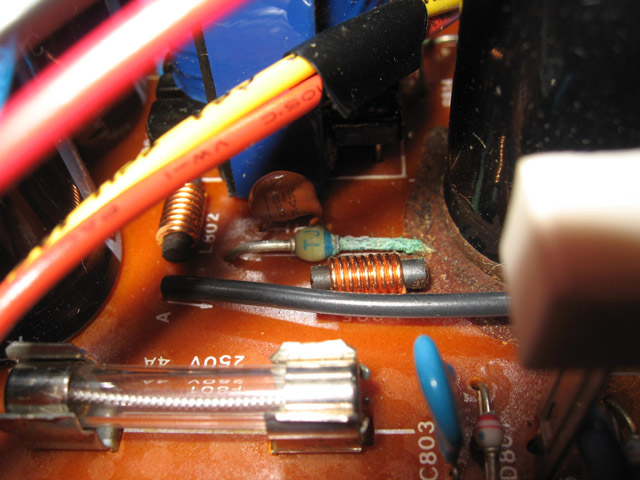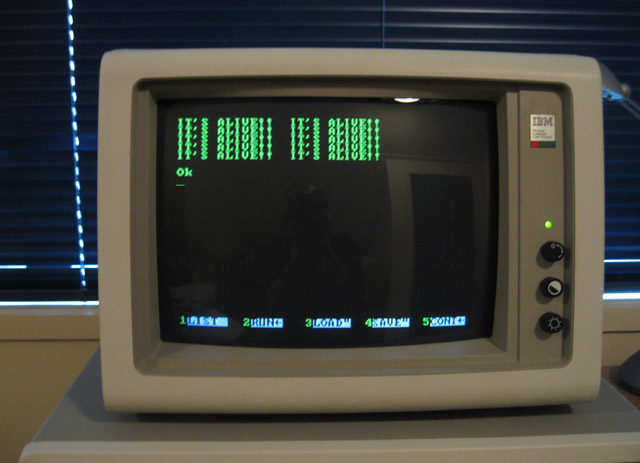tezza
Veteran Member
Hi,
I've finally got around to taking apart my IMB 5153 color monitor (the one I use with my CGA 5150) to see if I could find out why I have to give it a thump on the side occasionally to restore power. In fact it had got so bad, it had simply stopped working althogether.
Within the vertical PSU at the side of the cabinet (the side I used to thump occassionally) I found the following corroded diode.

I first checked the diode with a multimeter. no connection at all, unlike the other diodes in the circuit board. When I touched the corroded pin gently it simply came away from the main body of the diode. Bingo! (I hope!). I suspect this is the problem.
But..what are the specs of this diode? It has the code TJ4D on it. A search of the web reveals nothing?...nor do any catalogues I've got show anything that even looks like this. It definitely is a large diode though, as it has the diode symbol underneath it and is called D815 on the circuitboard.
Failing that, does anyone know where I can get a circuit diagram of this PSU card . I have a scanned copy of the technical reference manual but that just has a logic diagram of the main board of the color monitor.
I need to know what the modern equivalent of this (large) diode is so I can replace it? I've never seen anything like it before.
Anyone know what a replacement would be?
There seem to be a bit of capacitor leakage around that area too (which I assume caused the corrosion in the first place). The caps don't appear blown though in that the heads and flat and look fine. Worth replacing or better to just leave them?
Tez
I've finally got around to taking apart my IMB 5153 color monitor (the one I use with my CGA 5150) to see if I could find out why I have to give it a thump on the side occasionally to restore power. In fact it had got so bad, it had simply stopped working althogether.
Within the vertical PSU at the side of the cabinet (the side I used to thump occassionally) I found the following corroded diode.

I first checked the diode with a multimeter. no connection at all, unlike the other diodes in the circuit board. When I touched the corroded pin gently it simply came away from the main body of the diode. Bingo! (I hope!). I suspect this is the problem.
But..what are the specs of this diode? It has the code TJ4D on it. A search of the web reveals nothing?...nor do any catalogues I've got show anything that even looks like this. It definitely is a large diode though, as it has the diode symbol underneath it and is called D815 on the circuitboard.
Failing that, does anyone know where I can get a circuit diagram of this PSU card . I have a scanned copy of the technical reference manual but that just has a logic diagram of the main board of the color monitor.
I need to know what the modern equivalent of this (large) diode is so I can replace it? I've never seen anything like it before.
Anyone know what a replacement would be?
There seem to be a bit of capacitor leakage around that area too (which I assume caused the corrosion in the first place). The caps don't appear blown though in that the heads and flat and look fine. Worth replacing or better to just leave them?
Tez
Last edited:

